
Are you going to travel to the province of Guadalajara and you wonder what to see in Sigüenza and surroundings? Visit this town located in the region of the Serranía It means taking a trip back in time through its Celtiberian, Roman, Visigothic and Arab past.
As a result of its history, we can tell you about a medieval follow that lives with the Renaissance and baroque, as well as, of course, with today's modern city. In addition, this beautiful villa of Castilla la Mancha, declared a historical-artistic site in 1965, offers you a wonderful natural environment. For all this, we are now going to show you what to see in Sigüenza and surroundings, a town that is on a par with other equally beautiful alcarreñas. For example, Molina de Aragon, of which we have already told you.
Sigüenza Castle
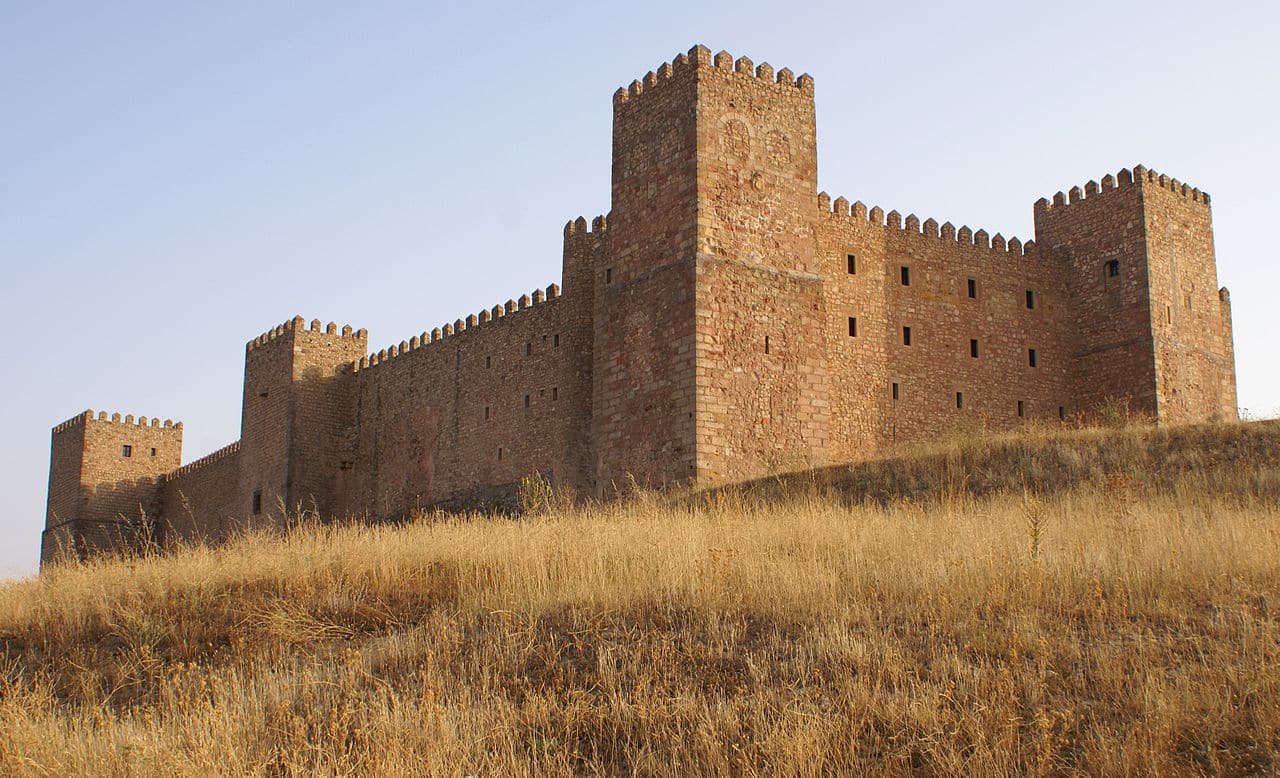
The castle, one of the main monuments to see in Sigüenza and surroundings
One of the great symbols of the town is its impressive castle-fortress erected in the XNUMXth century on the remains of a previous one. Subsequently, new buildings were added, such as the gate defended by two twin towers that overlooks the city and which is from the XNUMXth century. But it was the Cardinal Mendoza who turned it into a real palace a hundred years later.
Since its origins it belonged to the Segundino bishops, who were also lords of the town. However, it served as lodging for many kings on their way through Sigüenza. Some were even less lucky. In the fortress she was confined Doña Blanca of Castile, wife Peter I the Cruel.
Already during the War of independence it suffered serious damage that ended up leaving it almost in ruins. However, in the seventies of the last century it was completely rehabilitated to use it as a tourist hostel.
The cathedral of Santa Maria
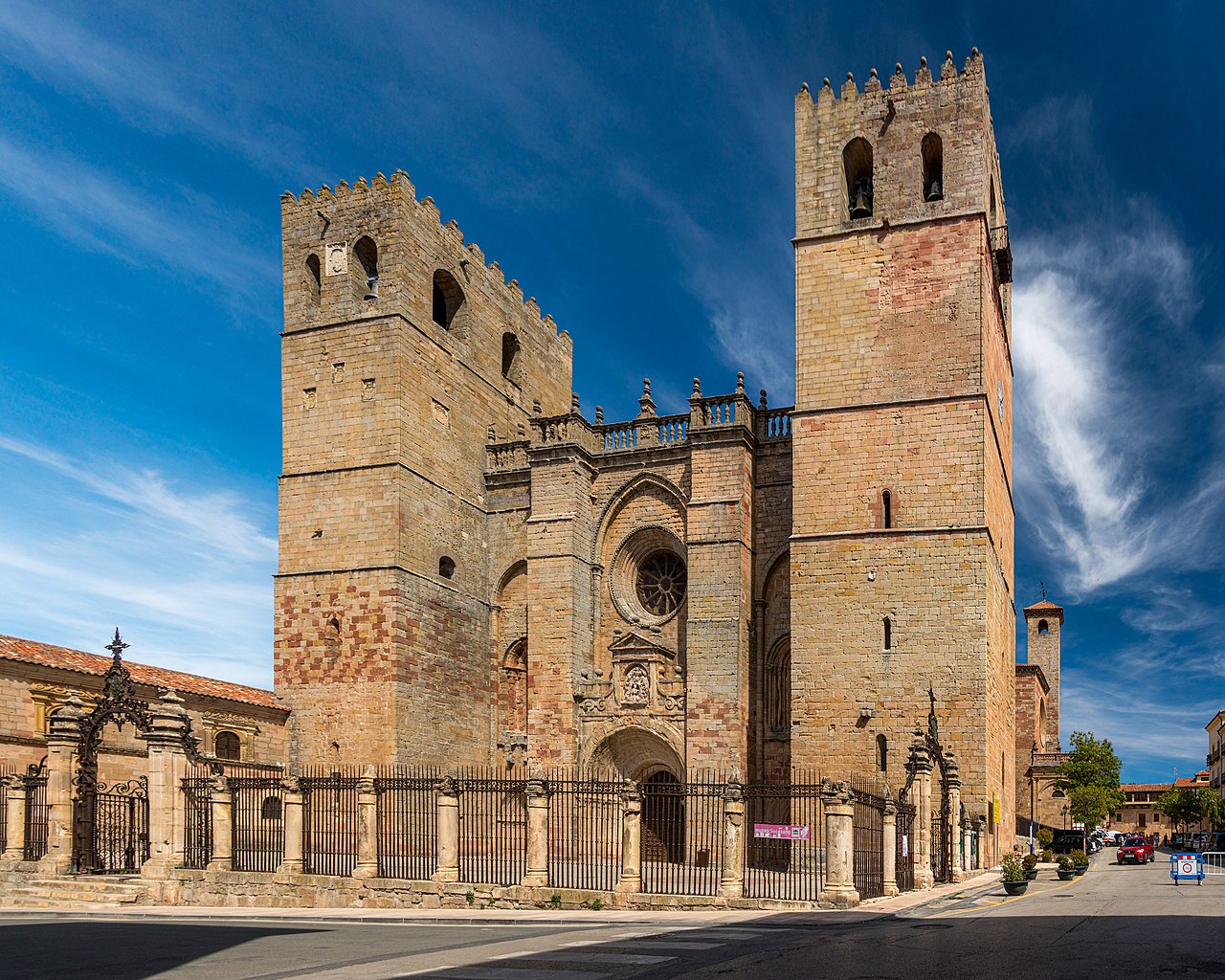
The Cathedral of Santa Maria de Sigüenza
Probably the other great symbol of Sigüenza is its majestic Cathedral of Santa María. Construction began in the mid-XNUMXth century to be completed a few decades later. Thus, combines the Cistercian-influenced Romanesque style with early Gothic. However, later new rooms were added, such as the cloister or the sacristy. One of its sides opens onto the spectacular Plaza Mayor of Sigüenza, a jewel Renaissance built by order of Cardinal Mendoza, then bishop of the town.
Its plan presents three naves separated by pillars, crossed by a wide transept and crowned by a chancel with five decreasing apses. Special magnificence has the west facade or principal, which is equally romanesque, although, later Baroque and neoclassical elements were added to it. It consists of three doors among which stands out the central one or of the Pardons. Likewise, two slender defensive towers that, initially, were exempt surround it. They are those of Don Fadrique and Las Campanas, but perhaps more characteristic is the Rooster Tower, built at the beginning of the XNUMXth century also for military purposes.
But if the cathedral is impressive on the outside, its interior is no less spectacular with its ribbed vaults, its large pillars and its magnificent chapels. Among the latter, we advise you to see that of the Annunciation, which combines Plateresque elements with other Mudejar ones; that of San Marcos, which is Gothic and, equally, Plateresque or the one of the Arce, which houses the precious funerary sculpture of the famous Siguenza maiden.
Other churches to see in Sigüenza and surroundings

The monastery of Nuestra Señora de las Huertas in Sigüenza
But the cathedral is not the only temple that you should visit in the Castilian town. It is also magnificent church of San Vicente, built at the beginning of the XNUMXth century in the Romanesque style and which houses a XNUMXth century Gothic Christ. We can tell you as much about the Church of Santiago, from the same period, which stands out for its large doorway with archivolts.
For its part, the San Francisco church is in the San Roque neighborhood, which was an extension of the town developed in the eighteenth century. This is an example of enlightened urbanism, with wide, straight streets and houses with a uniform design. The temple, like the whole neighborhood, responds to the Baroque style. In it is also found the Hermitage of San Roque, built at the beginning of the XNUMXth century following the neoclassical canons. To the same period and style belongs the church of Santa Maria.
As the natural lung of the San Roque neighborhood, the enlightened created the Alameda walk, where there are two other magnificent religious buildings. We talk to you about the hermitage of Humilladero, dating from the XNUMXth century, which combines Renaissance features with Gothic elements such as the polychrome vault. But, above all, we refer to the Monastery of Our Lady of the Orchards, built in the XNUMXth century on the remains of an old Visigothic church. It responds to the late Gothic style, although its cover and much of its decoration are Plateresque.
Casa del Doncel and Palace of Luján
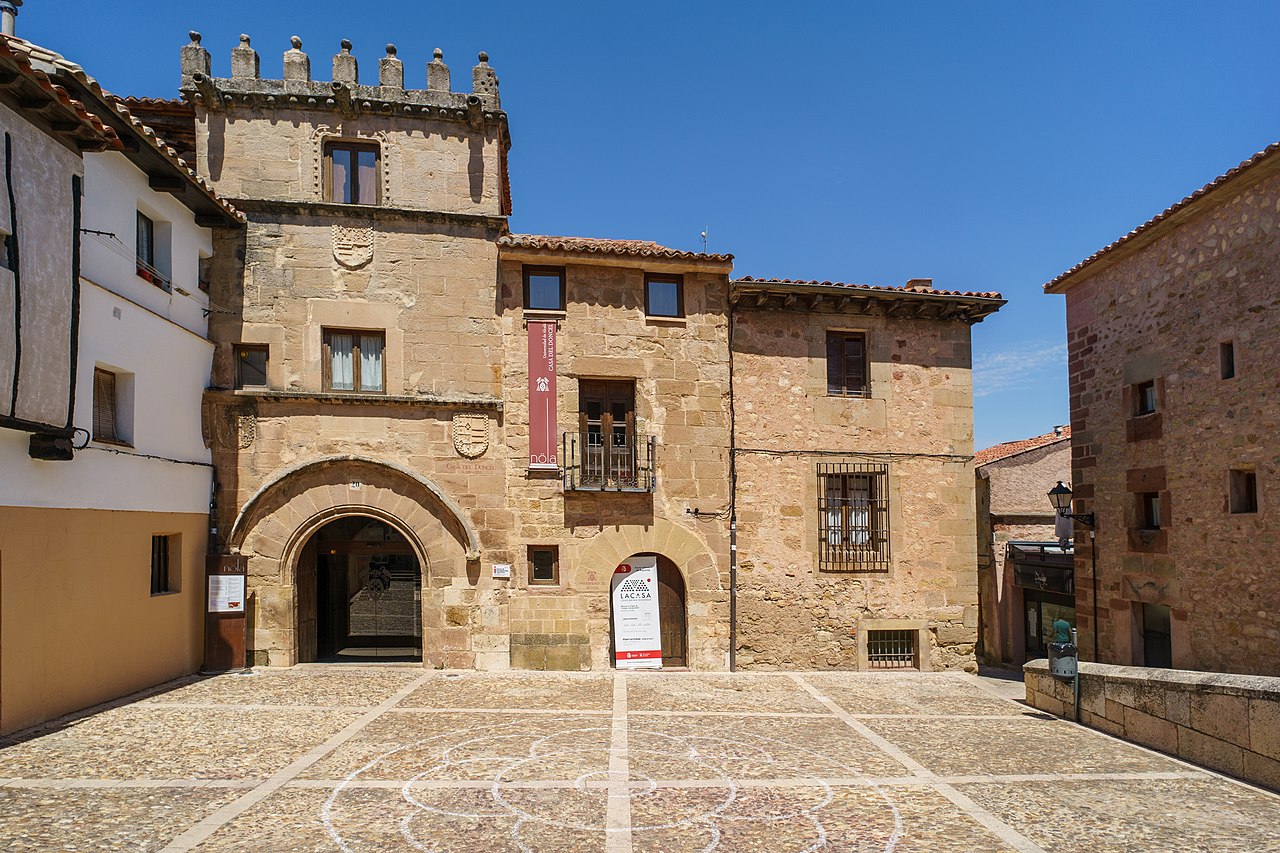
House of the Doncel de Sigüenza
We have already mentioned to you in passing Siguenza maiden. He was a knight of the Order of Santiago who died heroically in the Granada war. In his recognition, the villa is also known as "the City of the Maiden". Likewise, his family home is one of the most beautiful monuments in the town. The House of the Maiden or Palace of the Marquises of Bedmar It is a beautiful civil Gothic building that stands out for its crenellated façade and its noble coats of arms.
In turn, the Lujan Palace It was the home of the aforementioned bishop Fernando de Lujan. It is a Renaissance construction from the mid-XNUMXth century that later belonged to the Gamboa family, who placed their heraldic shield on the façade. Currently, it is the headquarters of the Diocesan Museum of Ancient Art, which houses a spectacular religious artistic heritage dating between the XNUMXth and XNUMXth centuries. Among his pieces, you can see works by Francisco Salzillo, Francisco Zurbaran o Louis de Morales.
Episcopal Palace and other monuments
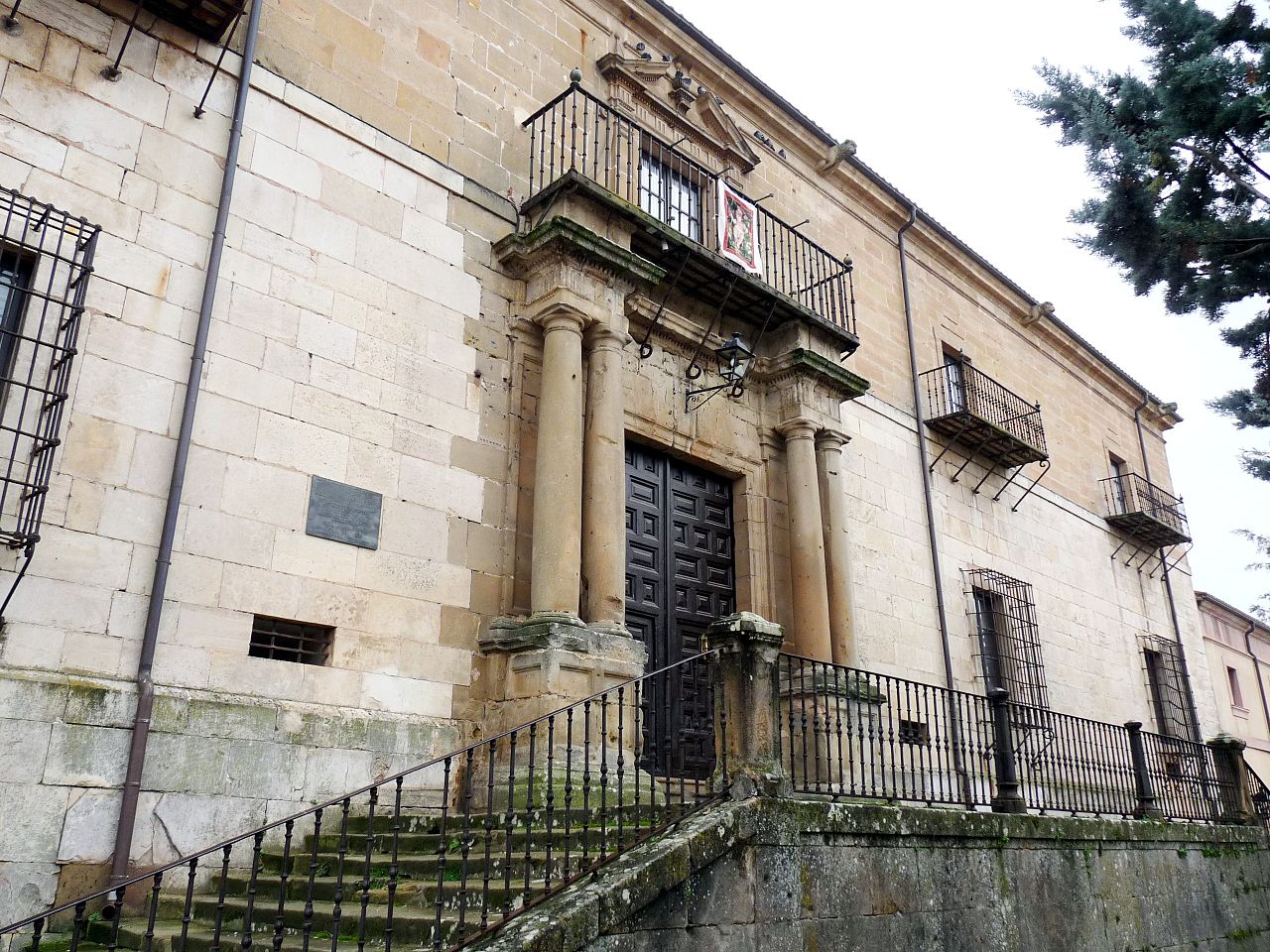
The magnificent Episcopal Palace
In the fifteenth century, the archdeacon Juan Lopez de Medina, supported by the Cardinal Mendoza, founded in Sigüenza the University of Saint Anthony of Portacoeli. Already in the XNUMXth century, the Bishop Saints of Risoba he built new buildings for her. Among them, the Conciliar Seminary of San Bartolomé and Episcopal palace. Both one and the other are in the Baroque style and have large covers. The university disappeared in the XNUMXth century, but currently there are courses from Alcalá de Henares that are taught in Sigüenza.
Furthermore, the San Mateo Hospital It was built in the XNUMXth century and, already rehabilitated, houses a residence for the elderly. The flour mill, from the XNUMXth century, has been transformed into an auditorium theater. And the Palace of Infants It was built in the XNUMXth century by the Italian architect Bernasconi. It is a three-story baroque building that is organized around a large central patio.
What to see around Sigüenza
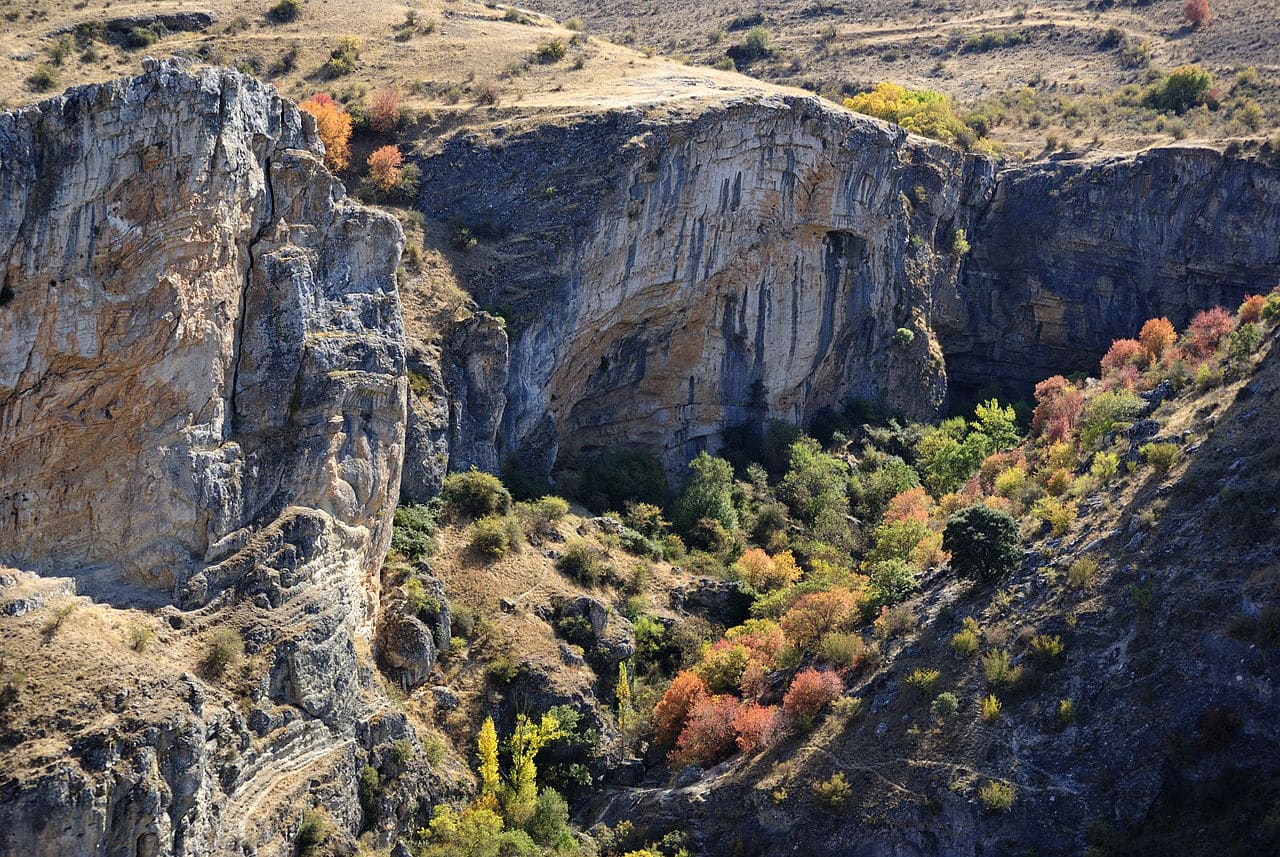
Natural Park of the Barranco del Río Dulce
As we told you before, if this Castilian town is beautiful, its surroundings are no less so. That is why we are talking to you about what to see in Sigüenza and surroundings. Now we come to the latter. Its region has several small towns full of charm and two protected natural spaces.
The first of these is the Natural Park of the Barranco del Río Dulce. It encompasses an area of more than eight thousand hectares around the spectacular canyon of the river that gives it its name. It is also Special Protection Area for Birds y Place of Community Importance. To see its spectacular landscapes, you have several hiking trails.
Thus, that of Aragosa-La Cabrera-Pelegrina, of twelve kilometers and low difficulty because it is completely flat. EITHER that of the Hoz de Pelegrina, of only four, although it covers the most abrupt area. One of its most impressive places is the Gollorio waterfall. For his part, the one of El Quejigar, five kilometers long, crosses a beautiful oak grove. There is also a one and a half kilometer route for the blind that starts from La Cabrera.
The other natural space that you should know is the Place of Community Interest of the Valley and Salinas del Río Salado with the micro-reserve of Los Saladares. included in the Natura 2000, has an extension of almost twelve thousand hectares and includes several spectacular areas. For example, him Ribas de Santiuste massif, encinares de santamera or their own fluvial salt flats. But, to complete our description of what to see in Sigüenza and surroundings, we also have to tell you about some people.
Palazuelos, Pelegrina or other towns
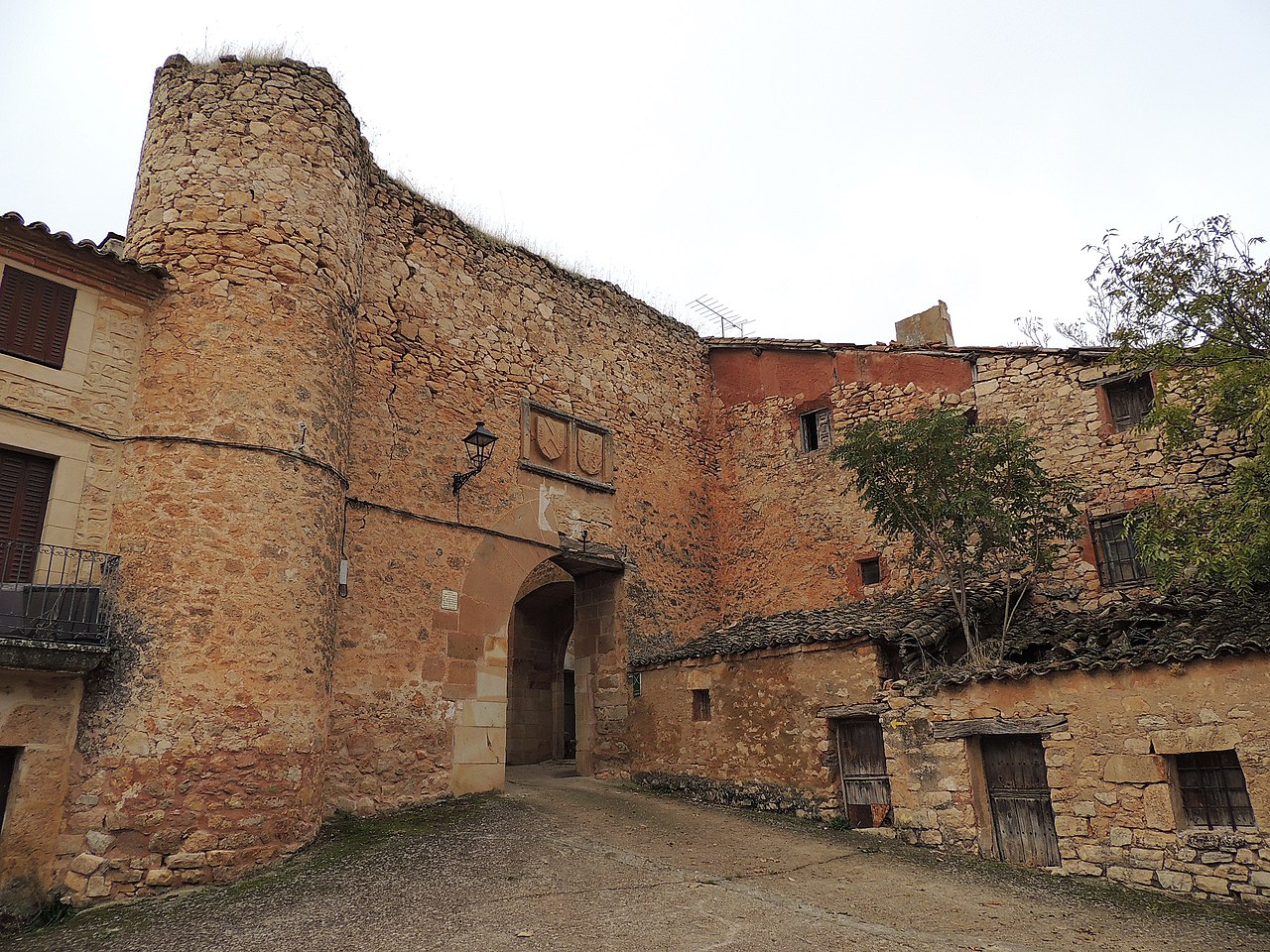
Gate of the Villa de Palazuelos
This is the case of Palazuelos, a small fortified town that preserves its layout of medieval streets. In fact, its walls are one of the best-preserved sets of this type in the entire Spain. And, how could it be otherwise, it is also dominated by a spectacular castle built in the fifteenth century by the Marquis of Santillana.
Likewise, we advise you to visit in this villa the parish church of San Juan Bautista. It was built in the XNUMXth century on top of a previous Romanesque one of which the cover has remained and, inside, it has a beautiful coffered ceiling of Mudejar influence. But, as we told you, the entire urban complex of Palazuelos is wonderful.
As for the pilgrim, also has a magnificent castle that rises on a hill dominating the valley of the Dulce river. It has a rectangular floor plan and, in addition to the keep, it has others with a cylindrical shape. Although it is worse preserved than the previous one, it is also worth visiting. And, by the way, come to the parish church, a marvelous Romanesque style built in the XNUMXth century.
Finally, in barbatona you have the sanctuary of the Virgen de la Salud; in pebbly and in Saints you can also see spectacular castles; in Cincovillas, the Romanesque church of San Vicente, built in the XNUMXth century, and in Torresaviñan, in addition to seeing its strength, you can follow the Don Quixote route.
In conclusion, we have shown you what to see in Sigüenza and surroundings. As you have seen, the so-called "City of the Maiden" is a monumental wonder and its surroundings a jewel of nature. Dare to visit this town Guadalajara and enjoy everything it offers you.